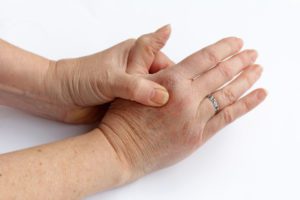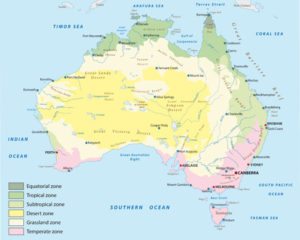Dandruff is a common scalp disorder characterized by the formation of flaky white or yellowish scales and sometimes pruritus which affects a large number of the population post-puberty.
Dandruff can be due to an altered dead skin proliferation; a disrupted barrier function; a decrease in the level of hydration and of natural moisturizing factors (NMF) in the scalp or a persistent inflammatory condition1.
Dandruff is neither contagious nor serious. It can however cause embarrassment and may sometimes be difficult to treat. Dandruff symptoms are easily identified with profuse flakes on hair and shoulders.
CAUSES
Skin problems can readily occur on the scalp, but the awareness about the importance of skin care in this region is low when compared with the face. Dandruff can have several causes2, including:
- Shampooing infrequently. When hair is not washed regularly, oils and skin cells from the scalp can build up causing dandruff.
- Sensitivity to hair care products (contact dermatitis). Sometimes sensitivity to certain ingredients in hair care products or hair dyes can cause a red, itchy, scaly scalp. If these types of symptoms are experienced, discontinuing product use is advised. If an allergic reaction such as a rash, hives or difficulty breathing is developed, medical attention must be sought immediately.
- Seborrheic dermatitis. This condition is one of the most frequent causes of dandruff and is characterised by red, greasy skin covered with flaky white or yellow scales. Seborrheic dermatitis may affect the scalp and other areas where oil glands are present (e.g. eyebrows, the sides of your nose etc.). If over-the-counter dandruff shampoos don’t seem to reduce dandruff, or if the scalp becomes red or swollen, specific treatment for seborrheic dermatitis may be needed.
- A yeast like fungus called Malassezia. Malassezia lives on the scalps of most adults. In some cases, it this fungus can irritates the scalp and cause more skin cells to grow. Tea tree oil, which comes from the leaves of Australian tea tree Melaleuca alternifolia, has been used for centuries as an antiseptic, antibiotic and antifungal agent. Small studies have suggested that tea tree oil may be effective in reducing dandruff. Tea tree oil is therefore included in a number of shampoos found in natural foods stores. However, the oil may cause allergic reactions in some people.
- Dry scalp. Flakes from dry skin usually present smaller and less oily than those from other causes of dandruff. Other symptoms such as inflammation and redness are uncommon. People with dry scalp often have dry skin on other parts of the body as well (e.g. legs and arms). The condition may worsen during autumn and winter, when indoor heating can contribute to dry skin, and may improve during the summer.
STRATUM CORNEUM ON THE SCALP
Research carried out to identify the factors causing flaky scalp has revealed some dysfunction of the stratum corneum (SC) in subjects affected by dandruff. The dandruff SC has lower hydration, elevated levels of urea and lower levels of lactic acid than the non-dandruff SC. Severe or chronic barrier damage can lead to atypical epidermal proliferation, keratinocyte differentiation and SC maturation. The depleted and disorganized structural lipids of the dandruff SC are consistent with the weakened barrier indicated by elevated transepidermal water loss3. Further evidence of a weakened barrier in dandruff includes subclinical inflammation and higher susceptibility to topical irritants. These observations suggest that directly addressing the quality of the SC could have a scalp benefit. A healthy stratum corneum (SC) forms a protective barrier to prevent water loss and maintain hydration of the scalp. It also protects against external insults such as microorganisms, including Malassezia, and toxic materials. Treatment of dandruff with cosmetic products to directly improve SC integrity while providing effective antifungal activity may thus be beneficial.
EFFICACY STUDIES
Clinical studies have been conducted to investigate the efficacy of anti-dandruff shampoo aiming at anti-fungal and/or moisturising effect to restore skin barrier. A study published in 2014 in the International Journal of Cosmetic Science4 revealed that treatment with an anti-dandruff shampoo containing 1% zinc pyrithione (ZnPTO) substantially restored the levels of hydration, urea and lactic acid close to the non-dandruff levels. The levels of sebum localized within the SC were also brought closer to those of the non-dandruff condition after ZnPTO treatment.
In the same year another study5 was conducted to investigate the efficacy of a moisturising ‘leave on lotion’ (LOL) containing a high concentration of glycerol (10%) and other known skin benefit agents (saturated fatty acid and sunflower seed oil) to reduce dandruff over an 8 week treatment period with 3 applications per week. Results of expert visual grading and biophysical measurements of SC parameters (transepidermal water loss and hydration) revealed a significant reduction in the dandruff condition over this period, with significant improvement in both SC water barrier function and hydration. These scalp skin benefits were maintained for up to a week following the end of the treatment. This study indicates that use of a glycerol-rich substantive LOL, designed to directly improve the quality of the SC barrier can have a significant impact on the dandruff condition.
SCALP CARE
Dandruff can be associated with various dermatological conditions such as seborrheic dermatitis as well as inflammation due to Malassezia, not shampooing often enough, or use of inappropriate skin care. Scalp dryness due to low humidity during winter or cooling and heating in highly sealed living environments is also a common cause of dandruff. Once the main cause has been identified, dandruff can usually be controlled with appropriate scalp treatment. Mild cases of dandruff may need nothing more than daily shampooing with a gentle cleanser in the case of sensitive scalp; antifungal shampoo in the case of seborrheic dermatitis or a moisturising shampoo, conditioner or ‘leave on lotion’ in the case of scalp dryness.
———————————–
REFERENCES
- Wang L, Clavaud C, Bar-Hen A, Cui M, Gao J, Liu Y, Liu C, Shibagaki N, Guéniche A, Jourdain R, Lan K, Zhang C, Altmeyer R, Breton L; ‘Characterization of the major bacterial-fungal populations colonizing dandruff scalps in Shanghai, China, shows microbial disequilibrium’; Exp Dermatol. 2015 May;24(5):398-400.
- http://www.mayoclinic.org/diseases-conditions/dandruff
- Turner GA, Hoptroff M, Harding CR; ‘Stratum corneum dysfunction in dandruff’; Int J Cosmet Sci. 2012 Aug;34(4):298-306.
- Bonnist EY, Pudney PD, Weddell LA, Campbell J, Baines FL, Paterson SE, Matheson JR.; ‘Understanding the dandruff scalp before and after treatment: an in vivo Raman spectroscopic study’; Int J Cosmet Sci. 2014 Aug;36(4):347-54.
- Harding CR, Matheson JR, Hoptroff M, Jones DA, Luo Y, Baines FL, Luo S; ‘A high glycerol-containing leave-on scalp care treatment to improve dandruff’; Skinmed. 2014 May-Jun;12(3):155-61.




